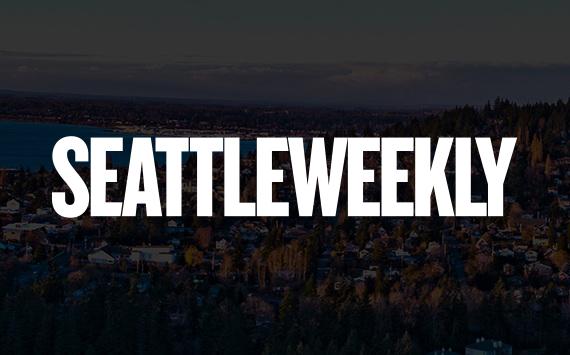I SOMETIMES WONDER if we’re bringing up a generation that will one day rise up and murder us in our beds.
Not that kids are particularly murderous these days, 6-year-old kindergarten shooters notwithstanding. But every day, I see stories in the papers and evidence on the streets that we are consciously, and often happily, guiding our children in incredibly harmful directions; that we are, in short, bequeathing them a legacy of mind-bending lunacy from which they might never recover. Here’s a shortlist of hideous trends and signs:
The Borging of Kids: The worst ideas inevitably show up in our public schools and various well-intentioned campaigns to improve them. Of course, these campaigns rarely suggest more freedom for kids, more choice, more unprogrammed time. They emphasize that children do not get enough school, and advocate that school days be extended and school run year-round. They emphasize standardized tests (never individual tests), and they promote the idea that schools should primarily be workforce training academies preparing goslings (drones) for the digital age. To do that, wiring kids to ever-more-sophisticated computers is at the top of the agenda. It’s not enough that school-age children are locked up for the better part of the day, forced to sit in rows and be a dutiful part of crowds that must be controlled and patrolled by X-ray machines and armed guards. They now must also be hooked up to computers in order to shape how they think: Windows, apparently, is not simply ubiquitous computer software but is destined to be the operating system for our children’s brains.
The Real Drug War: While Bill Clinton’s generals wage a so-called drug war in Colombia, another drug war is taking place here at home. We are using powerful, mind-altering drugs on our youth in unprecedented quantities. Forget pot or coke. For more than decade, the use of powerful drugs on school children, ostensibly to combat afflictions like Attention-Deficit Hyperactivity Disorder (ADHD), has been rising dramatically. The number of schoolkids being medicated with Ritalin and amphetamines tripled in the 1990s. Now it’s estimated that more than two million elementary school children are being treated for ADHD. (And please, no letters reminding me that ADHD is a legitimate affliction; I know in many cases it is. But the diagnosis of it is very squishy, schools have economic incentives to make such diagnoses via “special education” funds, and, well, see below.)
In late February, the Journal of the American Medical Association published a study that indicates the Ritalin trend has a trickle-down effect. Many doctors have dropped the age for ADHD treatment from ages 7 or 8 to 5 or 6, the study found. And more than simply lowering the age at which Ritalin is prescribed, the study found that other powerful, mind-bending drugs were being used at even earlier ages to deal with behavior. The study estimated that as many as 1.5 percent of all children 2 to 4 years old were on antidepressants, stimulants, or tranquilizers. We’re not just talking Ritalin, but drugs like Prozac and Thorazine. These drugs are not even tested for children in these age brackets, ages when the brain is still developing. Their safety and long-term effects are simply unknown.
Why are such powerful drugs being used on small children? In an interview with the Washington Post, Mark Stein of the Children’s National Medical Center suggested that pressure on kids to conform to day-care and school standards of behavior is driving this trend. “As we hurry kids along and put more expectations on them, they’re going to display more symptoms of ADHD, and I think there’s a tendency to start treating them younger.” In essence, much of ADHD is man-made, created by our desires to get kids under control earlier and earlier.
What do we say to a generation that is being drugged to fit into educational or family care structures? What does it say that we cannot tolerate the rambunctiousness of youth or the inconvenience of infants? Apparently, it takes a village to raise children, but only if that village has a well-stocked psychotropic pharmacy in the town square.
People decry genital mutilation in other cultures; what about mental mutilation in ours? And it’s made even worse by all the antidrug hypocrisy in our politics.
Nerds vs. Everyone: I have talked to more than one high-techie Microsoft-type who has admitted, very, very quietly, that some deep, dark part of them felt pleasure at the vengeance that was taken at Columbine. Is that sick? Well, it’s certainly a dark, hateful thought of the kind most people wouldn’t want to own up to. But imagine the life of nerds, ridiculed, outcast, and tormented for years by jocks, frat-boys-to-be, and the pervasive social culture of large public schools, which rewards obedience to authority, conformity, and sex appeal over intelligence, individuality, and awkwardness. Imagine the sweetness of revenge, seeing those tormentors brought low. Of course, many nerds can take concrete revenge by spending their burgeoning stock options, but even at the most legitimate levels of success in the software world a kind of outlaw impulse lurks: a subculture that is still rebelling and a fury at the oppressive elements of the broader culture—even while the industry itself is becoming a brute. (This is why Bill Gates can still see himself as a David against the US government’s Goliath.)
One could argue that the inner anger of many techies is an essential ingredient for their success. But I am suspicious of a system that creates socially damaged people, even if that damage ends up being key to their later success. Because for every brilliant nerd that goes on to fulfill his or her dreams, seasoned by the urge to get even, another damaged kid is out there, a time bomb waiting to go off, some dumb geek who wants us all to pay a price for what we’ve done.
Or maybe the Thorazine will have worked. Or the Ritalin. Or the Prozac.
In any case, pleasant dreams.






